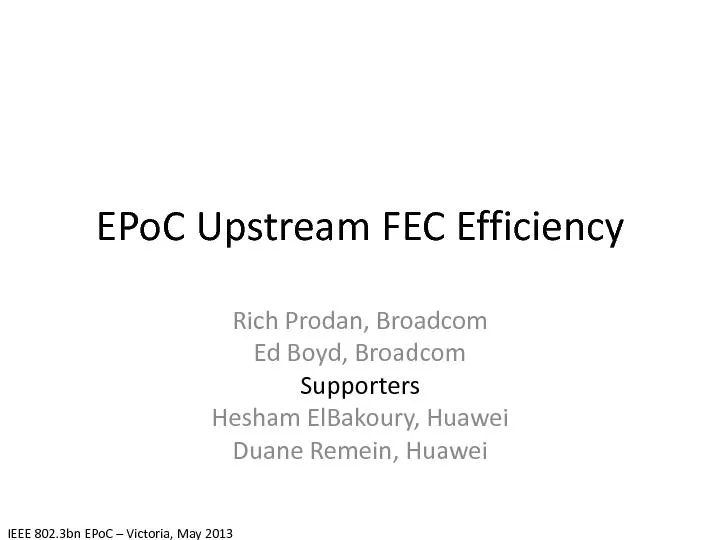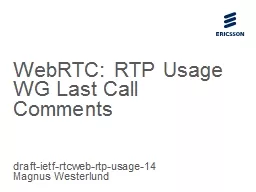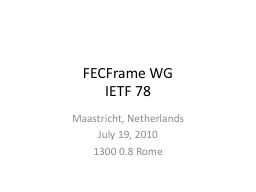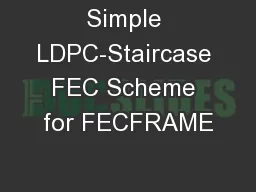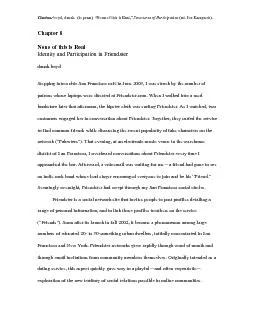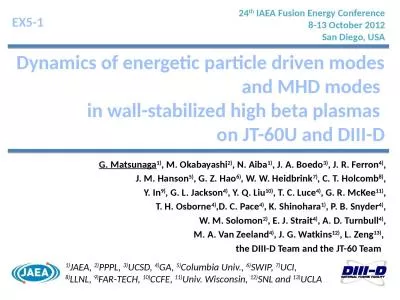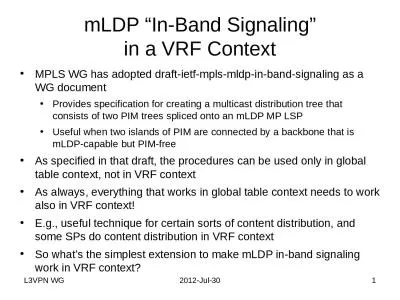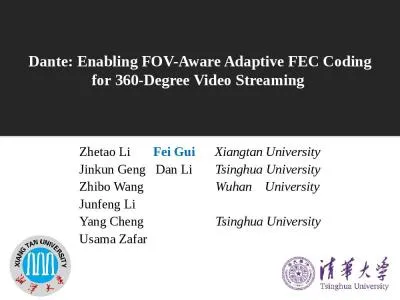PDF-EPoCUpstream FEC EfficiencyRich Prodan, BroadcomEd Boyd, BroadcomSuppo
Author : min-jolicoeur | Published Date : 2016-11-01
IEEE 8023bn EPoC 150 Victoria May 2013 OverviewThe efficiency of the downstream EPoCFDD is easy to understandIn the downstream the continuous PHY should have a
Presentation Embed Code
Download Presentation
Download Presentation The PPT/PDF document "EPoCUpstream FEC EfficiencyRich Prodan, ..." is the property of its rightful owner. Permission is granted to download and print the materials on this website for personal, non-commercial use only, and to display it on your personal computer provided you do not modify the materials and that you retain all copyright notices contained in the materials. By downloading content from our website, you accept the terms of this agreement.
EPoCUpstream FEC EfficiencyRich Prodan, BroadcomEd Boyd, BroadcomSuppo: Transcript
Download Rules Of Document
"EPoCUpstream FEC EfficiencyRich Prodan, BroadcomEd Boyd, BroadcomSuppo"The content belongs to its owner. You may download and print it for personal use, without modification, and keep all copyright notices. By downloading, you agree to these terms.
Related Documents

